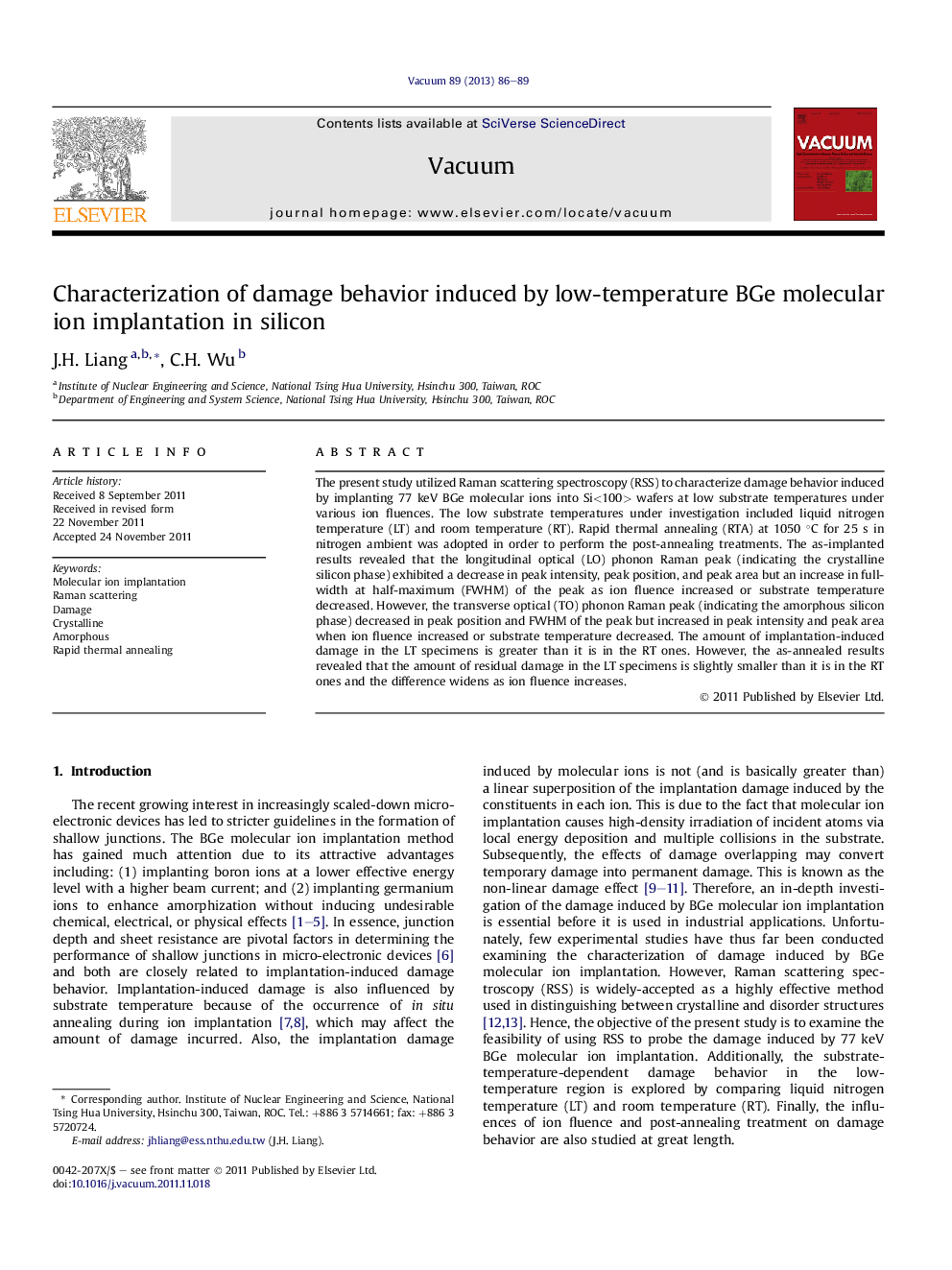| Article ID | Journal | Published Year | Pages | File Type |
|---|---|---|---|---|
| 1690362 | Vacuum | 2013 | 4 Pages |
Abstract
The present study utilized Raman scattering spectroscopy (RSS) to characterize damage behavior induced by implanting 77 keV BGe molecular ions into Si<100> wafers at low substrate temperatures under various ion fluences. The low substrate temperatures under investigation included liquid nitrogen temperature (LT) and room temperature (RT). Rapid thermal annealing (RTA) at 1050 °C for 25 s in nitrogen ambient was adopted in order to perform the post-annealing treatments. The as-implanted results revealed that the longitudinal optical (LO) phonon Raman peak (indicating the crystalline silicon phase) exhibited a decrease in peak intensity, peak position, and peak area but an increase in full-width at half-maximum (FWHM) of the peak as ion fluence increased or substrate temperature decreased. However, the transverse optical (TO) phonon Raman peak (indicating the amorphous silicon phase) decreased in peak position and FWHM of the peak but increased in peak intensity and peak area when ion fluence increased or substrate temperature decreased. The amount of implantation-induced damage in the LT specimens is greater than it is in the RT ones. However, the as-annealed results revealed that the amount of residual damage in the LT specimens is slightly smaller than it is in the RT ones and the difference widens as ion fluence increases.
Keywords
Related Topics
Physical Sciences and Engineering
Materials Science
Surfaces, Coatings and Films
Authors
J.H. Liang, C.H. Wu,
